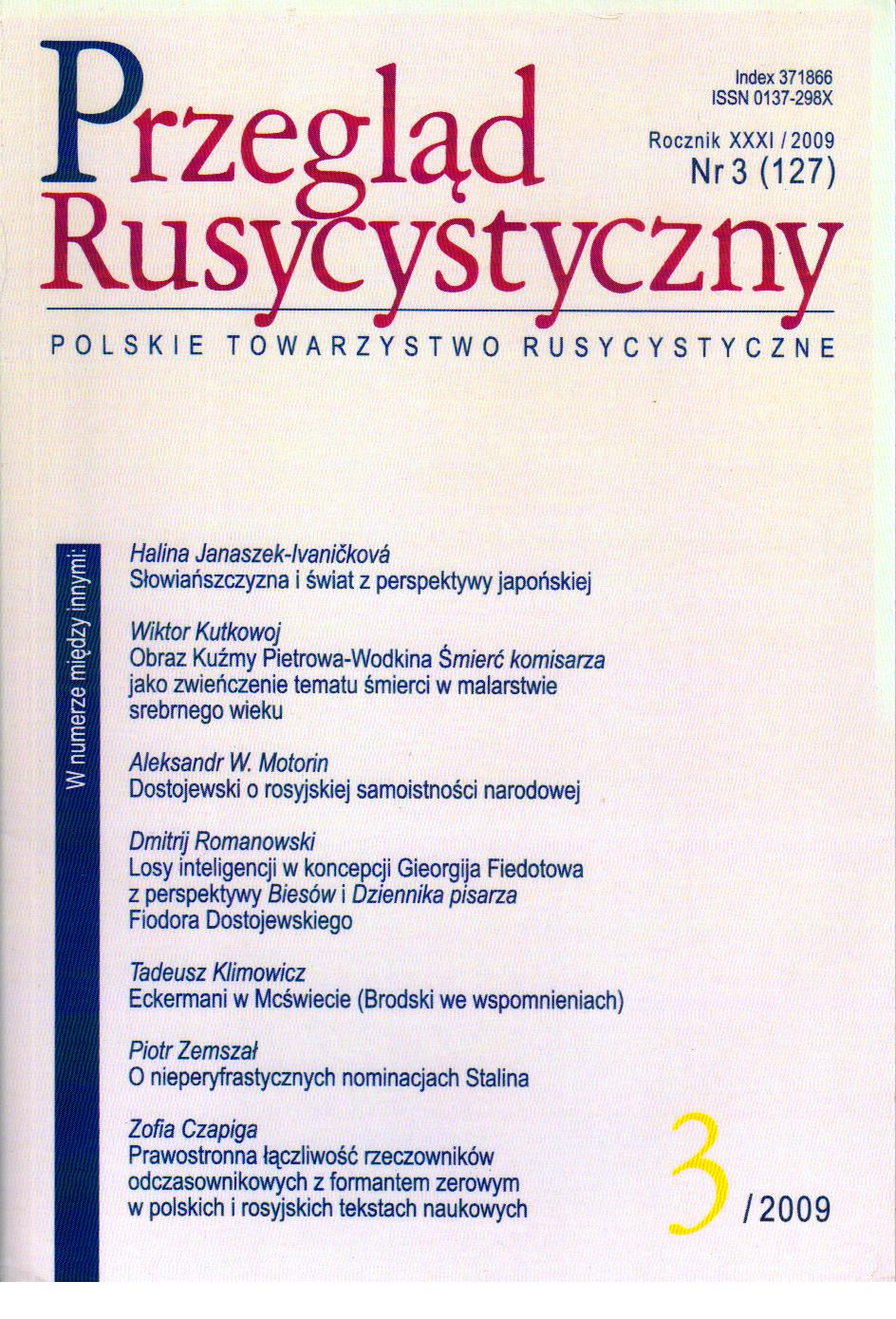Słowiańszczyzna i świat z perspektywy japońskiej
Slavdom and the world seen from a Japanese perspective
Author(s): Halina Janoszek-IvanickovaSubject(s): Politics / Political Sciences, Social Sciences, Language and Literature Studies, EU-Accession / EU-DEvelopment, Geopolitics
Published by: Polskie Towarzystwo Rusycytyczne
Keywords: Slavdom;Japanese studies; political studies; Eastern Europe; Central Europe; trasformation period
Summary/Abstract: The purpose of this article is to draw attention to the special way of viewing the Slavic regions in the continental and global contexts as interpreted by the Japanese scholars, who are implementing, as part of broad international cooperation, a program of spatial studies on regional transformations taking place after 1989 in Eurasia, or on the continent of which Slavdom is an integral part (the breakup of the Soviet mega-area, the rise of new Slavic countries, the entry of some of them into the meso-area of the European Union, etc.). Having analyzed the dynamics of the so-called mega- and meso- areas with the fl ywheel of global capitalism behind them, the Japanese authors draw far-reaching conclusions concerning the future self-identifi cation of the Slavic inhabitants of Eastern Europe from pro-Western to Central-European, from Central-European to European and Asian. At the end of this developmental process, they believe, the inhabitant of Eurasia will consider him/herself not only European but also Eurasian, and s/he will ultimately fully identify with Eurasia, considering him/herself Eurasian only. The author asks the question about the rationality and range of these predictions. To what extent it is wishful thinking, and to what degree it is the accurate understanding of the direction of globalization tendencies taking place on the common continent of Eurasia.
Journal: Przegląd Rusycystyczny
- Issue Year: 2009
- Issue No: 127
- Page Range: 5-22
- Page Count: 18
- Language: Polish

